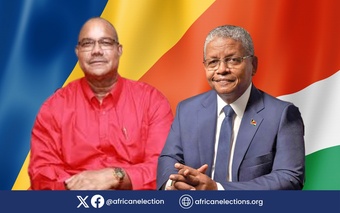By Stephen Ofosu
On September 27th, 2025, Seychellois voters hoped to elect their next president for a 5-year term. However, the results would require them to return to the polls on October 9 to 11th to choose between the incumbent and the main opposition leader in a crucial runoff contest.
The Electoral Commission announced that no candidate had secured the required 50% plus one vote needed for an outright victory in the vote that took place last month.
The results showed a closely divided nation. Patrick Herminie, leader of the United Seychelles party and a former vice president, came first with 48.8% of the votes with incumbent President Wavel Ramkalawan of the Linyon Demokratik Seselwa trailing him with 46.4%. The gap of 2.4 percentage points represented just over 1,800 votes.
Following the official results, Electoral Commission chairwoman, Wendy Didon announced that Seychelles would hold a presidential runoff from October 9-11, 2025. The three-day voting period accommodates the archipelago nation of 115 islands spread across 1.4 million square kilometres of ocean.
Special polling stations will open on October 9th and 10th for voters unable to cast their ballots on the main election day of October 11th.
More
than 77,000 registered voters will once again, choose between the two leading candidates. The six
other candidates who competed in the first round received less than 5%.
Alongside the presidential race, voters also elected representatives to the National Assembly. Twenty-six constituency seats were filled through the first-past-the-post system, with additional proportional representation seats allocated based on overall vote share.
The Assembly results showed that both major political parties would have
significant representation in parliament. For President Ramkalawan, who has led
the country since 2020, the parliamentary results added complexity to his
re-election bid. His administration had navigated the economic challenges
following the pandemic, which hit Seychelles' tourism-dependent economy hard.
After the first-round results, both campaigns intensified their efforts.
Patrick Herminie's campaign emphasized economic renewal and fresh leadership.
His United Seychelles party, which evolved from the Seychelles People's
Progressive Front, promised economic prosperity and positioned Herminie as a
leader who understands both governance challenges and citizens' needs.
President Ramkalawan focused on his track record. His campaign highlighted transparent governance initiatives, including the Truth, Reconciliation and National Unity Commission that addressed historical political divisions.
He emphasized stability and warned against abandoning existing progress, while outlining plans to support struggling families and strengthen economic resilience.
Editing by Peter Agbesi Adivor
Africanelections.org


 Take Voters' Compass
Take Voters' Compass